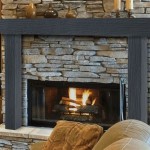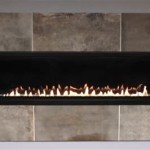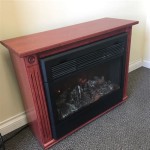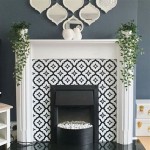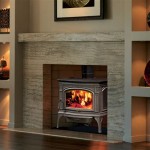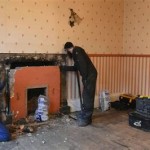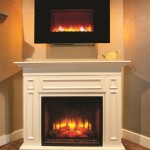```html
Delft Fireplace Tiles: A Timeless Elegance
Delft fireplace tiles represent a significant aspect of both art history and interior design. Originating in Delft, Netherlands, these tiles, characterized by their distinctive blue and white aesthetic, have adorned fireplaces for centuries, offering a unique blend of functionality and artistic expression.
The history of Delft tiles is intricately linked to the rise of Dutch Delftware, also known as Delft Blue. During the 17th century, Dutch potters, seeking to emulate the popularity of Chinese porcelain, began producing tin-glazed earthenware. The import of Chinese porcelain was disrupted, causing a demand in Europe that Dutch potters tried to fill. Consequently, they developed techniques to mimic the appearance and durability of porcelain, resulting in the creation of Delftware. This included tiles, which quickly became a popular decorative element for fireplaces and other architectural features. The blue and white color scheme, initially adopted to imitate Chinese designs, eventually became synonymous with Delftware itself.
Delft fireplace tiles are not merely decorative; they also serve a practical purpose. Placed around the fireplace opening, they protect the surrounding wall from heat damage and soot stains. The tiles' durable glazed surface is easy to clean, making them a practical choice for a high-traffic area exposed to fire. Furthermore, the tiles contribute to the overall aesthetic of the room, creating a focal point and adding a touch of elegance and sophistication.
The Production Process of Delft Tiles
The creation of Delft fireplace tiles involves a multi-step process that has remained relatively consistent over the centuries. The process begins with the preparation of the clay, which is carefully selected and mixed to achieve the desired consistency. The clay is then molded into individual tiles, typically square or rectangular in shape.
Once the tiles are formed, they undergo an initial firing at a relatively low temperature. This process, known as biscuit firing, hardens the clay and prepares it for glazing. After the biscuit firing, the tiles are coated with a white tin-based glaze, which provides the characteristic opaque white surface.
The decoration of Delft tiles is a meticulous hand-painting process. Skilled artisans use finely pointed brushes to apply cobalt oxide, which transforms into the signature Delft Blue color during the final firing. The designs range from simple geometric patterns to intricate scenes depicting landscapes, seascapes, biblical stories, and everyday life. The designs are often inspired by traditional Dutch motifs, Chinese porcelain, and other artistic influences.
Following the painting process, the tiles are fired again at a higher temperature. This firing fuses the glaze and the painted decoration, creating a durable and permanent finish. The heat transforms the cobalt oxide into the vibrant blue color that defines Delftware. The final product is a durable, artistically decorated tile that is ready for installation.
The Variety of Delft Tile Designs
Delft fireplace tiles showcase a diverse range of designs, reflecting the artistic trends and cultural influences of the time. Early Delft tiles often featured simple repeating patterns or floral motifs, influenced by the existing European tile traditions. As Delftware production matured, the designs became more elaborate and diverse.
Landscape scenes were a popular theme, depicting idyllic Dutch countryside with windmills, canals, and farmhouses. Seascapes were also common, reflecting the Netherlands' maritime history and its reliance on shipping and trade. These scenes often featured ships, sailors, and coastal views.
Biblical scenes were another significant category of Delft tile designs. These tiles often depicted stories from the Old and New Testaments, providing a visual narrative for viewers. Such tiles were commonly used in wealthier homes to provide a religious dimension. Religious buildings also had these tiles adorning their infrastructure.
Genre scenes, depicting everyday life in the Netherlands, were also popular. These scenes offered a glimpse into the lives of ordinary people, showcasing activities such as farming, fishing, and market trading. These genre scenes offer a valuable social history component.
Identifying Authentic Delft Tiles
Due to the popularity and enduring value of Delft fireplace tiles, identifying authentic pieces can be a challenge, especially for novice collectors. Several factors can help in determining the authenticity and value of Delft tiles.
The presence of a maker's mark is a significant indicator. Many Delftware manufacturers marked their tiles with a distinctive symbol or initials. Researching these marks can help to identify the origin and age of the tile. Resources, such as books and online databases, that archive the history of Delftware and its markings are relevant.
The quality of the painting is an important consideration. Authentic Delft tiles are typically hand-painted, and the brushstrokes should be visible. The detail and precision of the painting can also indicate the skill of the artisan and the overall quality of the tile.
The consistency and texture of the glaze are also relevant. Delft tiles typically have a thick, opaque glaze with a slightly uneven surface. The glaze should be free of major imperfections, such as cracks or chips.
The age of the tile can be estimated based on the design, style, and manufacturing techniques. Older tiles often exhibit signs of wear and tear, such as minor chips or cracks, which can add to their character and value. Consulting with a knowledgeable antique dealer or Delftware expert can provide valuable insights into the authenticity and value of Delft fireplace tiles.
```
Delft Tiles Their History And How To Decorate With Them House Garden

Delft Tile Fireplace Botanical Prints Framed The Glam Pad

Tile Your Fireplace In Five Easy Steps Home Surround Surrounds

Paperartsy 2024 10 Tiled Patterns Around The Fireplace With Esc By Alison Er

A Fireplace Of Delft Tiles In Fournier St Spitalfields Life

This Couple Found Delft Tile And Marble Under An Ugly Fireplace

Gallery

Testimonials Delft Tiles

Fireplace Surround Custom Tile Work By Lisa Strachan

Hand Made Ceramic Tiles And Murals Installation S Douglas Watson Studio
Related Posts

